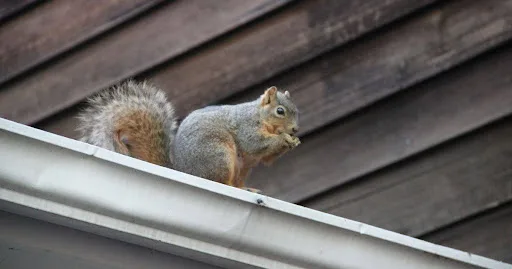Squirrels can be charming, but they can create significant issues when they invade your home. Recognizing the signs you need squirrel removal is crucial to maintaining the integrity of your property and ensuring your safety. Left unchecked, these pests can cause damage to wiring, insulation, and structural components.
Look for indications such as unusual noises in your attic or walls, especially during dawn or dusk. You might also notice droppings, nesting materials, or even signs of gnawing around entry points. Prompt action will help prevent further complications and costly repairs, ensuring your space remains welcoming and rodent-free.
Identifying Squirrel Infestation
Recognizing the signs of squirrel infestation is crucial to preventing damage to your property. Look for specific indicators to determine whether these animals have made themselves home in your roof or other areas.
Common Signs of Squirrel Presence
Squirrel activity often leaves obvious signs. You might notice chewed wires, insulation, or wood around your home. These animals are known for gnawing, which can lead to potential fire hazards and structural damage.
Another indication is droppings, typically found in nest areas. Squirrel droppings resemble those of small rodents and can carry diseases.
Scratching sounds in the walls or ceilings are also common, particularly during early morning or late evening hours. If you hear persistent noises, it could signal that squirrels are present, prompting the need for squirrel removal.
Roof and Wiring: Primary Targets
Squirrels often target roofs and wiring for nesting materials and shelter. They tend to enter through damaged or open areas, such as gaps in roofing or vents. This access can lead to further issues, including water damage and compromised roofing integrity.
Wiring is particularly vulnerable to squirrel damage. They frequently chew on electrical wires, which poses a serious fire risk. If you notice exposed wires or insulation, it may indicate a squirrel problem.
In Southlake, specific environmental conditions and landscaping can attract squirrels. Monitoring these areas can help you take preventive measures against potential infestations. Addressing these issues promptly is essential to protecting your home from squirrel-related damage.
Health and Home Safety Concerns
Squirrels can pose significant health and safety risks to your home. Addressing these concerns promptly is crucial to maintaining a safe living environment.
Squirrels and Electrical Hazards
Squirrels are notorious for chewing on electrical wires, which can create significant fire hazards in your home. When insulation is damaged, exposed wiring increases the risk of electrical shorts, possibly leading to outages or fires.
To protect your wiring, consider installing protective coverings or barriers in areas where squirrels may access wires. Regular electrical system inspections can help you catch any potential issues early. If you notice frayed wires, seek professional assistance immediately to avoid serious consequences.
Structural Damages and Risks
The nesting habits of squirrels can lead to structural damage in your home. They often create nests in attics, vents, or even inside walls. Their constant gnawing can weaken wood structures and cause costly repairs.
In addition, squirrel droppings may lead to health concerns as they can harbor diseases. If you suspect a squirrel infestation, timely removal is essential to prevent damage. Sealing entry points and maintaining your property can help deter future infestations and associated risks.
Effective Squirrel Removal Strategies
Addressing a squirrel infestation involves immediate actions and long-term strategies to ensure your property remains squirrel-free. Understanding these methods can help you take effective measures quickly.
Immediate Removal Tips
- Locate Entry Points: First, inspect your home for gaps, holes, or damaged areas where squirrels might enter. Common spots include attics, vents, and roofs. Seal these openings with durable materials.
- Remove Food Sources: Clear away any food available to squirrels. Store birdseed, pet food, and garbage in secure containers. Additionally, pick up fallen fruit and nuts in your yard.
- Use Traps: Set humane traps in areas where you notice squirrel activity. Bait the traps with peanut butter or nuts. Check the traps regularly, and release captured squirrels at least five miles away from your property.
- Noise and Smells: Utilize noise devices or scents like predator urine to deter squirrels. Scents of foxes or coyotes can be particularly effective in moving them away.
Long-Term Prevention and Control
- Maintain Your Property: Regularly trim trees and bushes away from your home. This decreases the likelihood of squirrels jumping onto your roof.
- Install Squirrel-Proofing: To discourage feeding, use squirrel-proof bird feeders and baffles. Consider installing fencing or netting around gardens and fruit trees.
- Professional Help: Consider reaching out to professionals at companies like Critter Stop. They can assess the situation and provide comprehensive solutions. With a fantastic reputation and positive customer reviews, Critter Stop ensures high-quality work and excellent customer service.
- Ongoing Monitoring: Regularly monitor your home for signs of squirrel activity. Early detection is crucial for preventing further infestations.
For expert advice and assistance, contact Critter Stop for a free inspection at (214) 234-2616.







